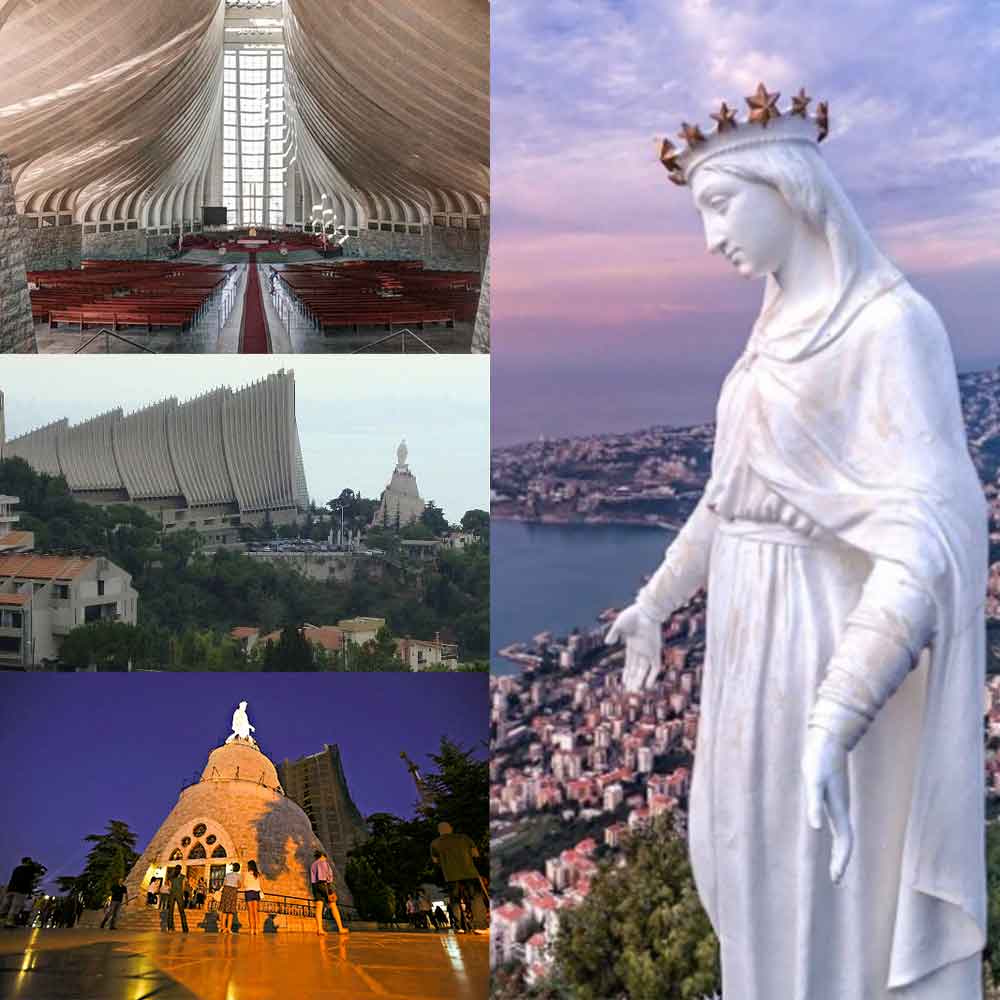Shrines around the World: Our Lady of Lebanon
Where’s that: In Harissa, near the city of Jounieh.
Our Lady’s connection: Our Lady of Lebanon is a symbol of the country’s religious and cultural identity, and of interreligious harmony.
Members of Maronite parishes will be familiar with the statue of Our Lady of Lebanon, which was erected in 1907 on top of a chapel on a hill at Harissa, near the coastal city of Jounieh and 26km north of Beirut.
The statue of the Virgin Mary, with her hands outstretched towards Beirut, is made of bronze and is painted white. It stands 8,5m high and has a diameter of 5m.
The shrine was initiated in 1904 to mark the 50th anniversary of the declaration of the dogma of the Immaculate Conception by Pope Pius IX.
The shrine of Our Lady of Lebanon attracts millions of pilgrims annually.
Remarkably, these pilgrims are not only Christians, who account for approximately 30% of Lebanon’s population, but also include Lebanese Muslims and Druze, who have a devotion to Mary. As such, it is not only a site of Christian devotion but also of interreligious encounter and national unity in Lebanon. It is also a major tourist attraction, with visitors taking the nine-minute ride on the gondola lift, the Téléphérique, up the hill. From there, they can enjoy a great view overlooking the city and bay of Jounieh.
The shrine is under the jurisdiction of the Catholic Maronite patriarchate. A large, modern concrete and glass cathedral and the Melkite Catholic church of St Paul serve the site’s liturgical needs. The basilica was built over 21 years — through the many years of Lebanon’s terrible civil war — and was inaugurated in 1992. Pope John Paul II visited the shrine in 1997, and Pope Benedict XVI in 2012.
Published in the May 2025 issue of The Southern Cross
- Shrines Around the World: Our Lady of Guadalupe - December 12, 2025
- The Chosen’s Mother Mary: I loved washing Jesus’ hair - December 5, 2025
- Book Review: Benedict, Baltimore and the Barbary Pirates - December 4, 2025




